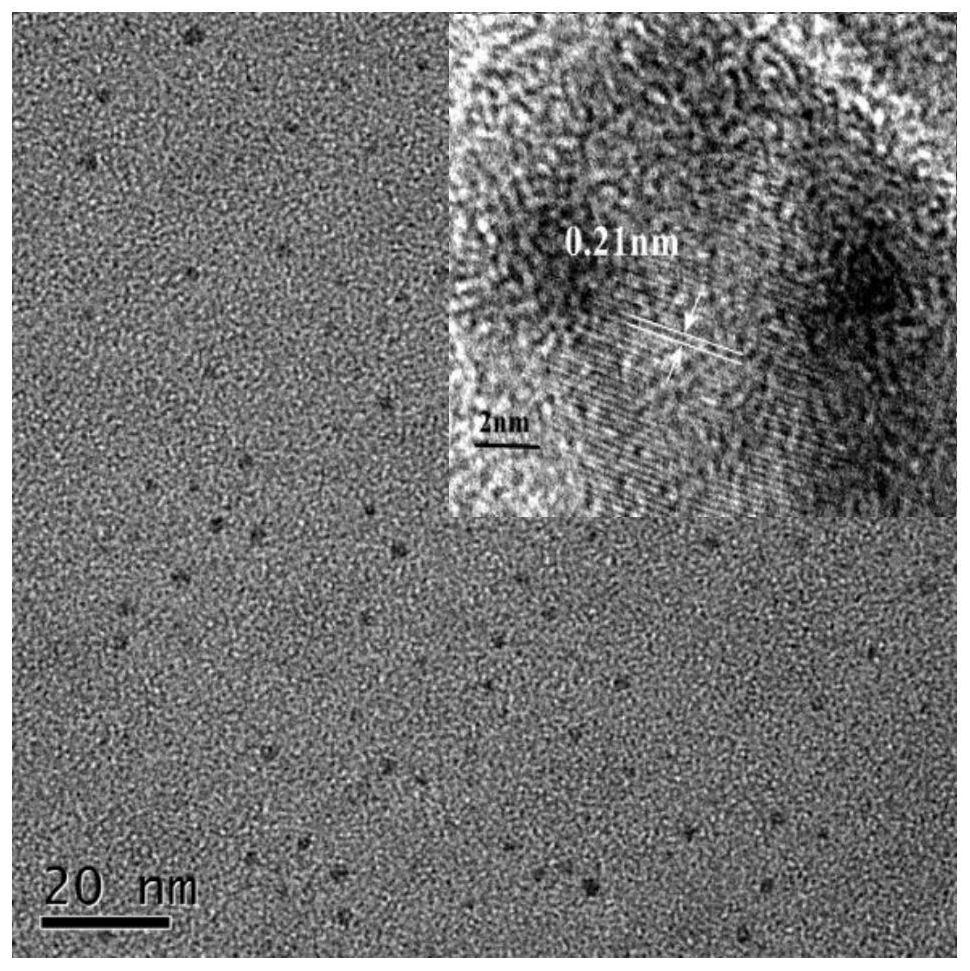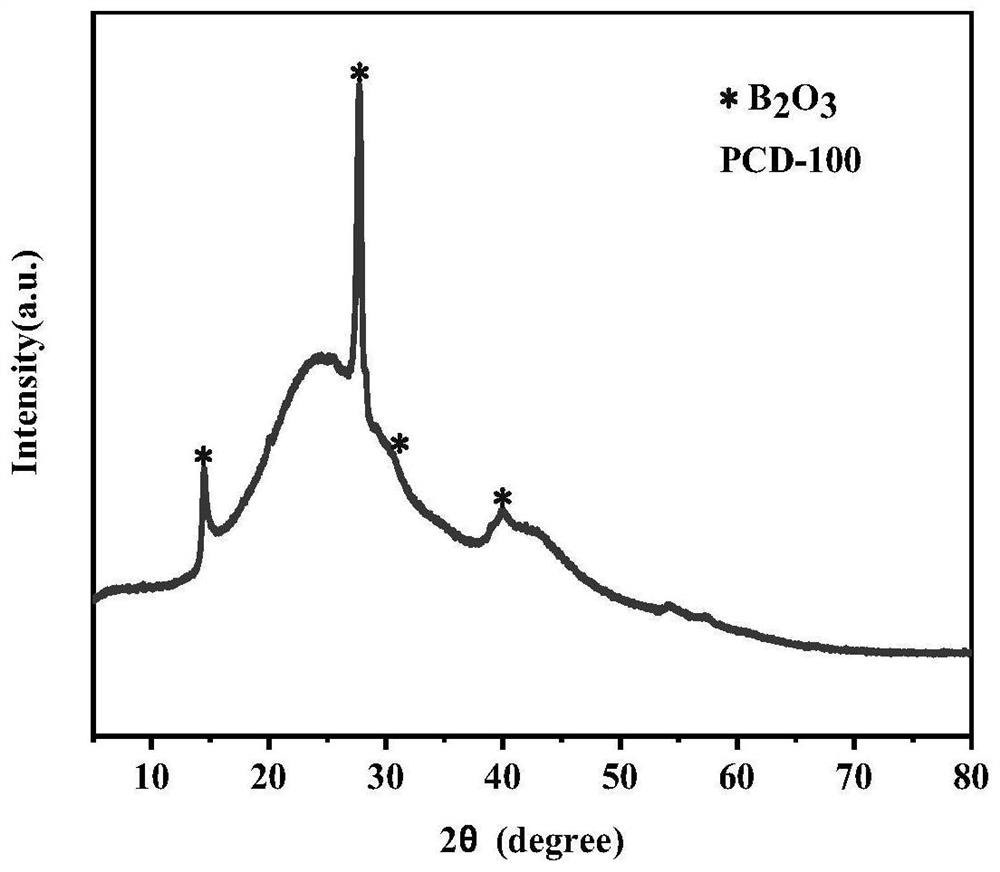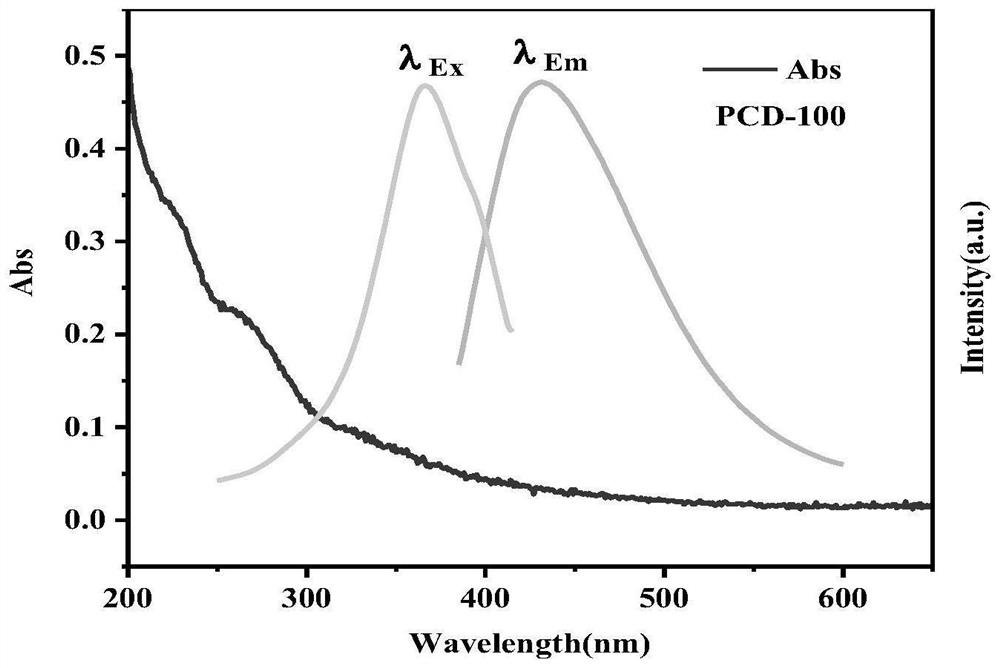Phosphorescent carbon dot, application of phosphorescent carbon dot in anti-counterfeiting and information encryption and LED lamp bead based on phosphorescent carbon dot
A technology of LED lamp beads and carbon dots, which is applied in the field of nanomaterials, can solve problems such as no public and reliable solutions, and achieve high efficiency, afterglow life, and long afterglow life.
- Summary
- Abstract
- Description
- Claims
- Application Information
AI Technical Summary
Problems solved by technology
Method used
Image
Examples
Embodiment 1
[0047] This embodiment provides a phosphorescent carbon dot, which uses vitamin B1 as a precursor and is prepared by a two-step solvothermal method. The specific steps are:
[0048]1) 50 mg of vitamin B1 was added to 10 mL of deionized water, then 150 μL of ethylenediamine was added, the resulting mixture was placed in a polytetrafluoroethylene-lined stainless steel autoclave, and hydrothermally treated at 180° C. for 8 hours;
[0049] 2) After the reaction, cooled to room temperature, the product was centrifuged at 10,000 rpm for 10 minutes to remove the non-fluorescent precipitate to obtain a carbon dot solution;
[0050] 3) Take 100ul of the carbon dot solution obtained in step 2) and place it in a 30ml beaker, add 20mL of deionized water, then add 3g of boric acid, take a piece of tin foil to completely cover the beaker, and place it at the mouth of the beaker on the tin foil. Poke several small holes; then place the beaker covered with tinfoil in a drying oven and hydroth...
Embodiment 2
[0053] This embodiment provides an application of the phosphorescent carbon dots of Embodiment 1, which is applied to anti-counterfeiting and information encryption.
[0054] In a preferred embodiment, the phosphorescent carbon dots are applied to anti-counterfeiting, and the application method is as follows: using phosphorescent carbon dots to draw feature marks, and using non-phosphorescent carbon dots to draw interference marks, the feature marks and interference marks form anti-counterfeiting marks; Under the excitation light of 365 nm, the characteristic mark shows blue fluorescence, and the interference mark shows yellow fluorescence. When the excitation light at 365 nm is turned off, the characteristic mark shows green fluorescence, and the fluorescence of the interference mark disappears, so that the characteristic mark is used as special information for anti-counterfeiting.
[0055] In a preferred embodiment, the phosphorescent carbon dots are applied to information en...
Embodiment 3
[0057] This embodiment provides an LED lamp bead, which is prepared by the phosphorescent carbon dots of Embodiment 1.
[0058] The specific preparation method is as follows: mixing the phosphorescent carbon dot powder according to any one of claims 1-6 and epoxy resin AB glue, placing it in the center of the LED chip of ultraviolet light, then placing it in an oven, at 100° C. Dry for 1 hour and cool to room temperature to obtain LED lamp beads. The working voltage of the LED lamp bead is 3.0V.
PUM
| Property | Measurement | Unit |
|---|---|---|
| Angle | aaaaa | aaaaa |
Abstract
Description
Claims
Application Information
 Login to View More
Login to View More - R&D
- Intellectual Property
- Life Sciences
- Materials
- Tech Scout
- Unparalleled Data Quality
- Higher Quality Content
- 60% Fewer Hallucinations
Browse by: Latest US Patents, China's latest patents, Technical Efficacy Thesaurus, Application Domain, Technology Topic, Popular Technical Reports.
© 2025 PatSnap. All rights reserved.Legal|Privacy policy|Modern Slavery Act Transparency Statement|Sitemap|About US| Contact US: help@patsnap.com



